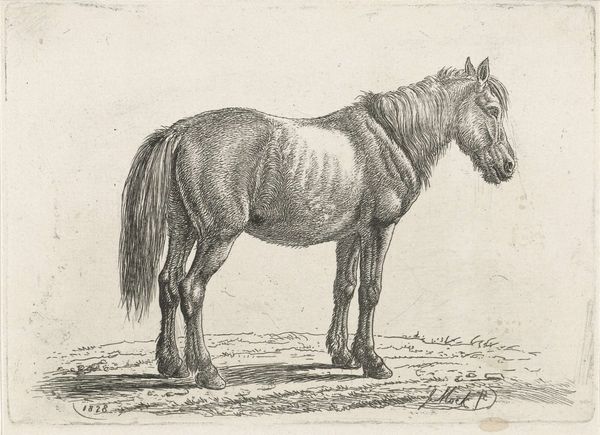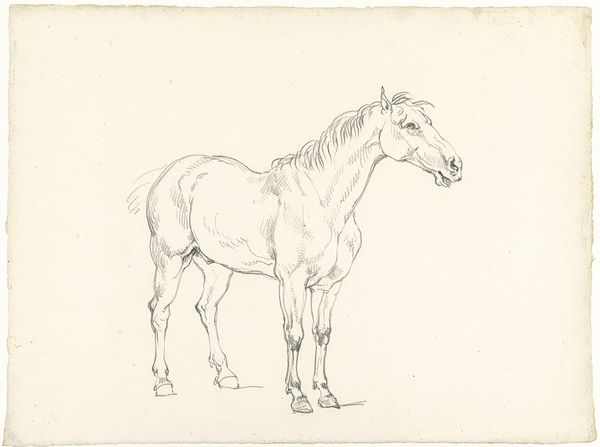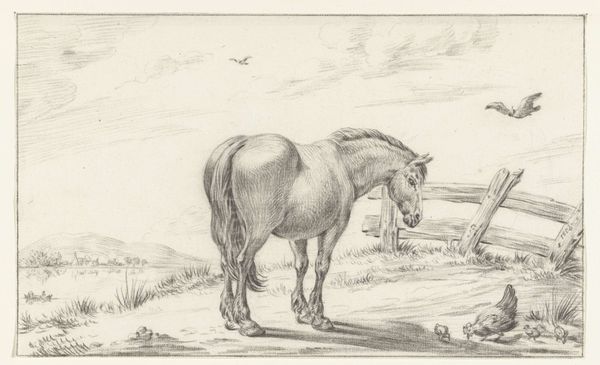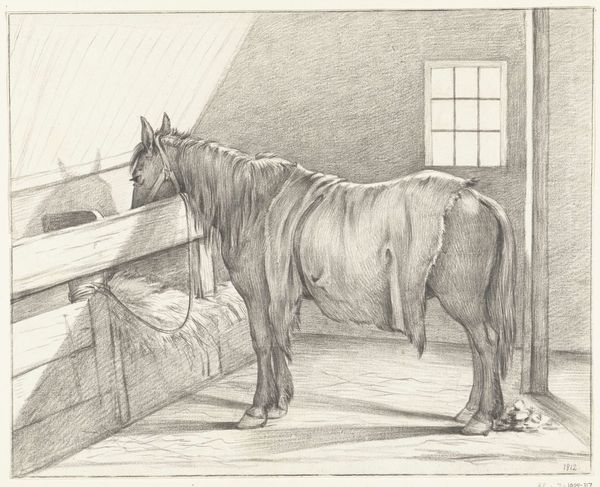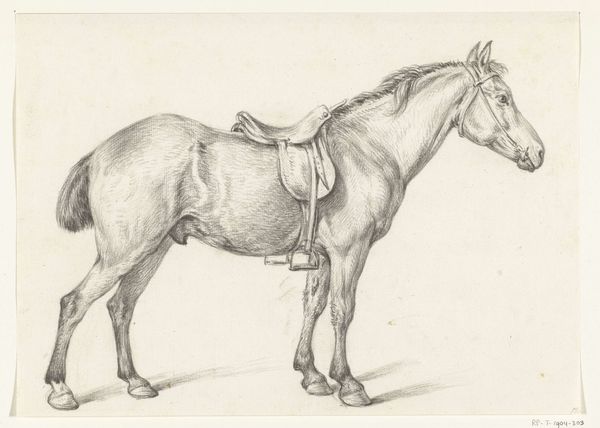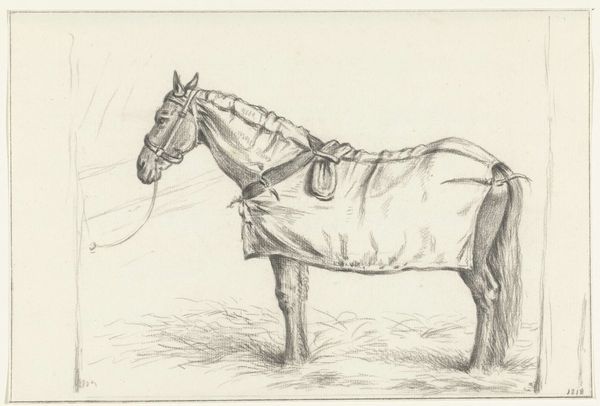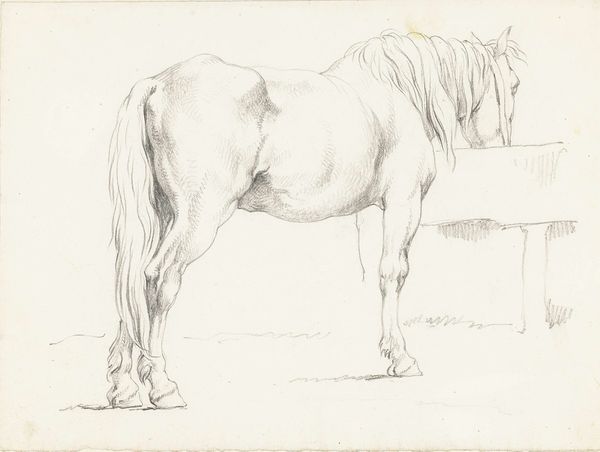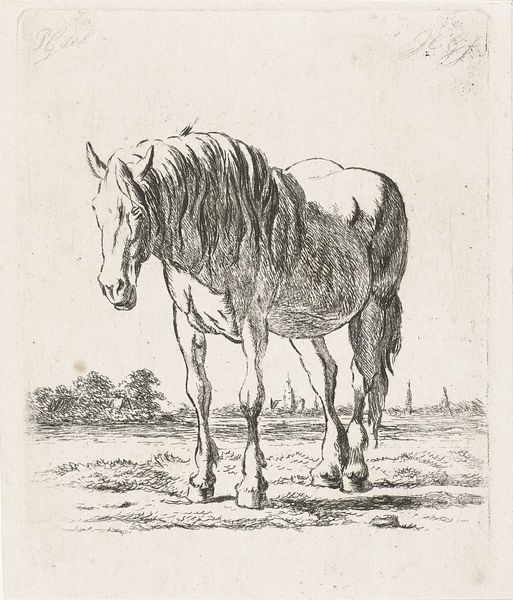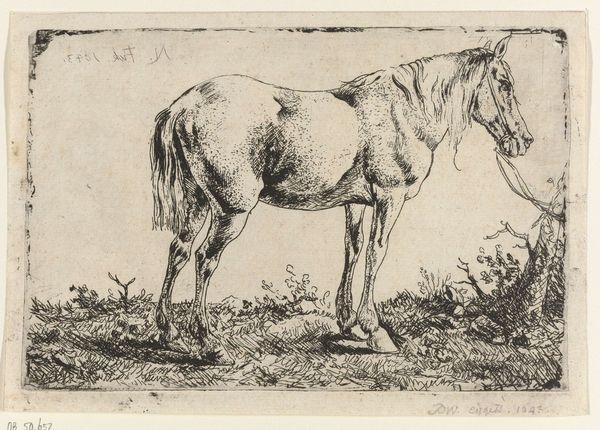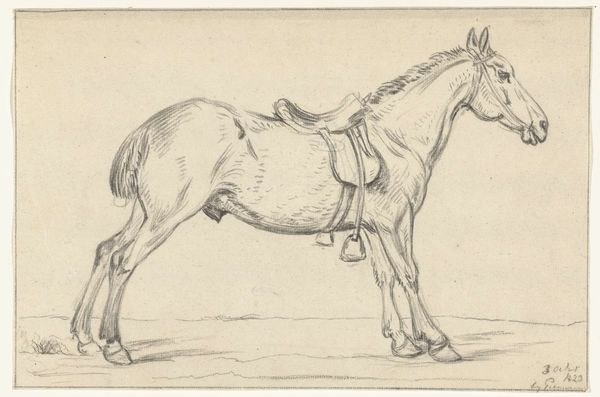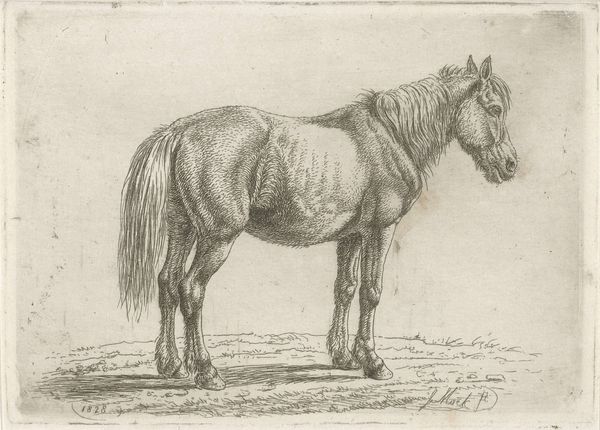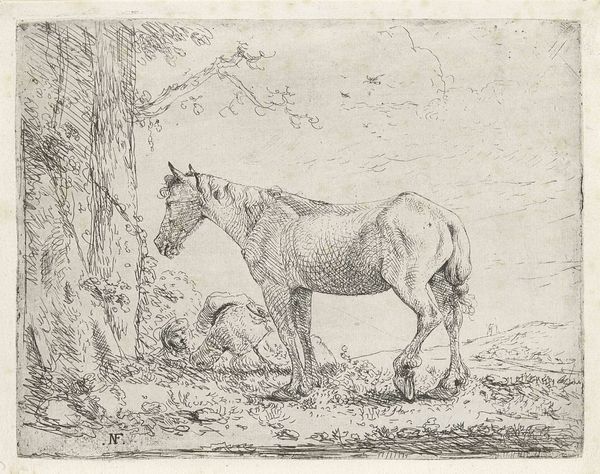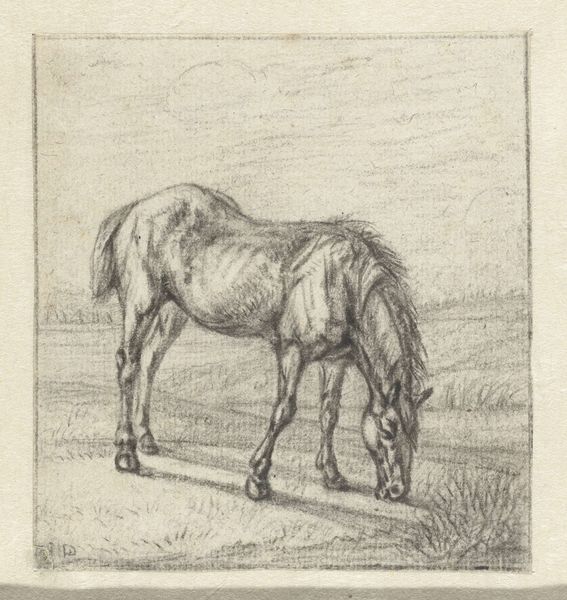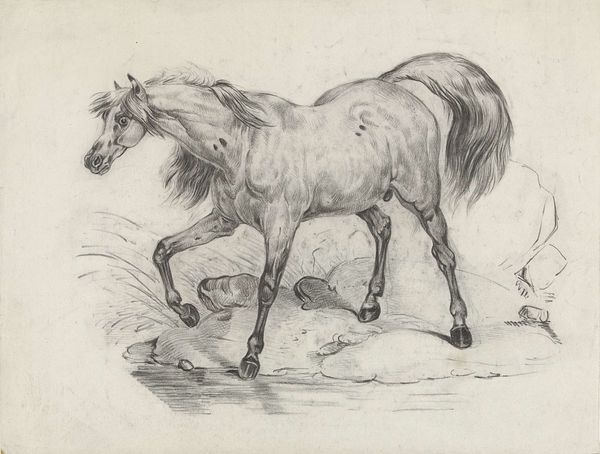
drawing, pencil
#
drawing
#
pencil sketch
#
landscape
#
form
#
romanticism
#
pencil
#
horse
#
realism
Dimensions: height 210 mm, width 301 mm
Copyright: Rijks Museum: Open Domain
Editor: Here we have Jean Bernard's "Standing Horse in a Stable, Facing Left," created in 1817, using pencil as the primary medium. It feels so serene and calm; the horse appears almost melancholic. How do you interpret this work? Curator: I'm immediately drawn to the interplay of light and shadow that Bernard meticulously crafts with his pencil. Notice how the texture of the horse’s coat is defined not just by line, but also by subtle variations in tone. Consider, too, the use of negative space; how does it shape our perception of the subject? Editor: The use of shadow really does give a sense of depth. The lines forming the hay create the same effect, in a different way, because they're so tightly packed together. Curator: Precisely. And what about the composition? The positioning of the horse relative to the stable post... What effect does this have? The post bisects the image vertically. Editor: Well, the post creates an interesting division, doesn’t it? It almost traps the horse, heightening the sense of stillness that I first felt. Perhaps this communicates a subtle tension between freedom and confinement? Curator: A perceptive observation. The structural elements invite precisely this kind of layered reading. How would you describe the handling of line throughout the composition? Editor: The linework varies quite a bit—more delicate on the horse’s face and thicker, more assertive strokes for the post and hay. It definitely directs my eye to the focal point: the horse itself. It's clear form is important. Curator: Indeed, Bernard uses the formal qualities of the drawing to communicate meaning beyond just representation. It becomes an essay on form itself, and on how varying the density of line impacts the viewer's attention. Editor: It is like he is studying the relationship of dark and light with pencil, the same way painters play with colour. I now understand that form can be both a subject and a tool. Thanks for the clarification!
Comments
No comments
Be the first to comment and join the conversation on the ultimate creative platform.
